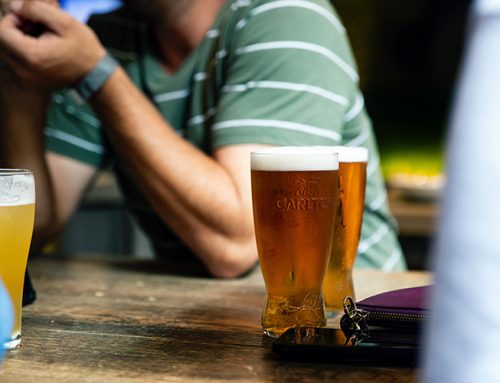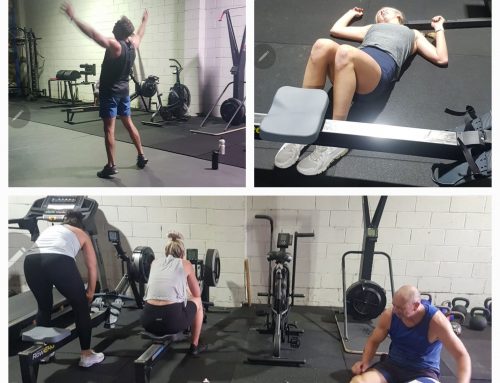As you’ve no doubt heard, to lose fat you simply have to burn more calories than you consume.
Simple in theory but not so easy to calculate in actuality as there are a host of variables.
Many of these variables are to do with your metabolism. Ahhh, Metabolism you say knowingly…
If you’re not exactly sure what your metabolism is despite hearing it thrown around a million times you are not alone. In very simple terms it’s just the set of non-stop chemical reactions that occur in your body to keep you alive (dead people have notoriously slow metabolisms) and hopefully healthy. These reactions consume energy. And that’s really all you need to know for our purposes.
We’re going to have a look at the most common forms of exercise that you might do to burn fat and then compare them. Ultimately all exercise can be effective for fat loss but as you’ll see some offer a bit more bang for your buck.
Let’s have a look at the types of exercises we are going to dive into.
–Low intensity, steady state aerobic. Like walking or easy paced swimming.
–Medium intensity, steady state aerobic. Jogging, cycling at moderate pace, some fitness classes.
–High intensity short duration intervals. Run intervals, hill sprints, a hard HITT class, etc
–Sports
– Resistance training.
To determine how effective each exercise is for burning fat we are going to look at how many calories are burned during the actual exercise time and then how many calories you burn after you finish the activity. I.e., the effect on your metabolism.
Also you need to know that there’s this thing called EPOC (Excessive Posturing On Cue, as seen in front of big mirrors in big gyms) Ok, that’s not actually what EPOC is but it is a thing. EPOC stands for Excess Post-exercise Oxygen Consumption and just relates to the fact that you will burn energy at a higher rate after you exercise for a period of time, than if you hadn’t exercised.
The higher the intensity of the exercise and the longer the duration of it, the more energy you’ll burn after you’ve finished.
We don’t all burn calories at the same rate. A 90kg man and a 60kg woman walking at the same pace won’t burn the same number of calories. Weight, body composition, fitness levels all determine how much energy a person will expend doing an activity. In these examples I’m basing the calorie expenditure on imaginary people who weighs about 75-80kg. It’s the comparison that’s relative not the actual figures
To make the different intensities easy to compare all our exercisers will exercise for 45min
Ok, so let’s get into it and have a look at our first one.
Low intensity, steady state aerobic exercise.
Gertrude went for a 45min walk at a good but still comfortable pace, bless her.
During her walk she burns calories at around 5 per/min so ends up burning 225cal.
After finishing her metabolism was elevated (EPOC at work) and for the next 2hrs she burnt an extra calorie/min more than if they hadn’t exercised. So 120 extra calories to go with the 225 during the walk. All up her walk used 345 calories, and got her caught up on her Green Thumbs podcast.
Medium intensity steady state.
This time our intrepid exerciser is a runner, Miles. He’s no ultra-marathoner so he heads out for 45min.
At his moderate pace he burns 12 calories per/min which means he ends up consuming 540 during his run.
Because the intensity was higher than walking his EPOC is also higher and for a longer time period.
He still burns an extra calorie per/min more, but for up to 3hr’s this time which gives him 180cal to add on to the 540 during his run. Bringing his grand total to 720 calories.
Despite exercising for the same time as Gerty, Miles’s 45min run has more than doubled the calorie expenditure of the 45min walk.
–High intensity short duration intervals
Let’s head into a HIIT class (High intensity interval training) this time with Blaze.
Your typical class goes for around 45-50min. However, during that time Blaze gets taken through a warm up, she has some rest periods and some lower intensity moments. When we average all that out Blaze’s average burn is around the same as Miles’s. So her workout expenditure is the same, 540cal. However when Blaze works out she goes hard. As a result her metabolism is fired up quite a bit more than Miles and her EPOC period is both longer and more intense. For the first 2 hours after she finishes, she’s blazed through an extra 2cal/min on top of her normal metabolic rate. And then for a further 4 hrs she burnt an extra 1/cal min resulting in an extra 480cal to add onto her initial 540 to give her a 1020 calorie total. Not a bad return on her 45min.
Sports
Ok, I said we’d have a look at sports, but we’re not really going to.
Different sports have vastly different energy expenditure requirements.
The level you play a sport or even the position you play will dramatically alter your outputs.
Alas, don’t fear, common sense is here. Think about the sport you play and basically how intense it feels to you whilst playing. And then just compare it to an activity we’ve looked at that is most similar in energy output. Viola!
Resistance Training
Our last exerciser is….Arnold. And Arnold likes to lift shit.
Our Arnold is a little time poor and must squeeze his routine into 45min.
That said he doesn’t muck around, he Super Sets so he’s never just sitting around, he doesn’t check his phone, in fact he knocks out more reps than words. Although he always lets us know “I’ll be back!”
As such he’s punches through around 8 cal/min and burns 360 calories in his workout.
Intense weight training places stress (the good sort) on your muscular, skeletal, and nervous system. As such it has a high metabolic demand. His metabolism stays elevated above its normal rate for 8 hours. 3 cal/min higher for the first hour. 2 cals for the next 2hrs and then a further 1cal/min for the remaining 5hrs. Post workout he burns an extra 780 calories in the 8hrs to add onto his 360 in the workout. Giving him a nice 1140 calorie return on his 45min. No wonder He’ll be back!
So what is the best exercise to lose fat?
On pure figures we’d have to say resistance training.
But that said if you’re going to lose fat and keep it off there is one absolute factor that you will require.
Consistency, both in training and whatever nutrition changes that inevitably you will need to adjust.
So, choose the type of exercise that you are most likely to do, day after day. Even better choose multiple exercise types and mix them up as they all offer other benefits other than just calorie burning.
(Just a note that without a laboratory it’s impossible to exactly know how many calories someone will burn and what an individual’s metabolism is. The figures I’ve thrown out are broad estimates to show in a simple way how different forms of exercises affect the whole calorie burning process.)
Source of fuel for the energy, i.e., burning fat or carbs,
If you’re still not convinced, you will be when we tell you that you continue burning calories for about 3 to 16 hours after HIIT, due to a phenomenon called excess post-exercise oxygen consumption (EPOC). The more intense the workout, the greater your body’s oxygen debt is — as a result, you’re consuming oxygen at an elevated rate, which means you’re still expending energy and burning calories. HIIT’s effects on the EPOC stage are greater than that of running or cycling at a steady pace because the intensity of a HIIT workout raises your metabolic rate.
Since sprinting is highly taxing to the nervous system it is very energy intensive and while the body can efficiently sprint for short bouts it must repay its debt over the ensuing hours
\ The afterburn effect is otherwise known as EPOC (excess post-exercise oxygen consumption) and it’s the process by which we smash through carbohydrates in our HIIT session, before switching to burning FAT for fuel after the workout ends and continuing to burn calories at an accelerated rate in the hours that follow



